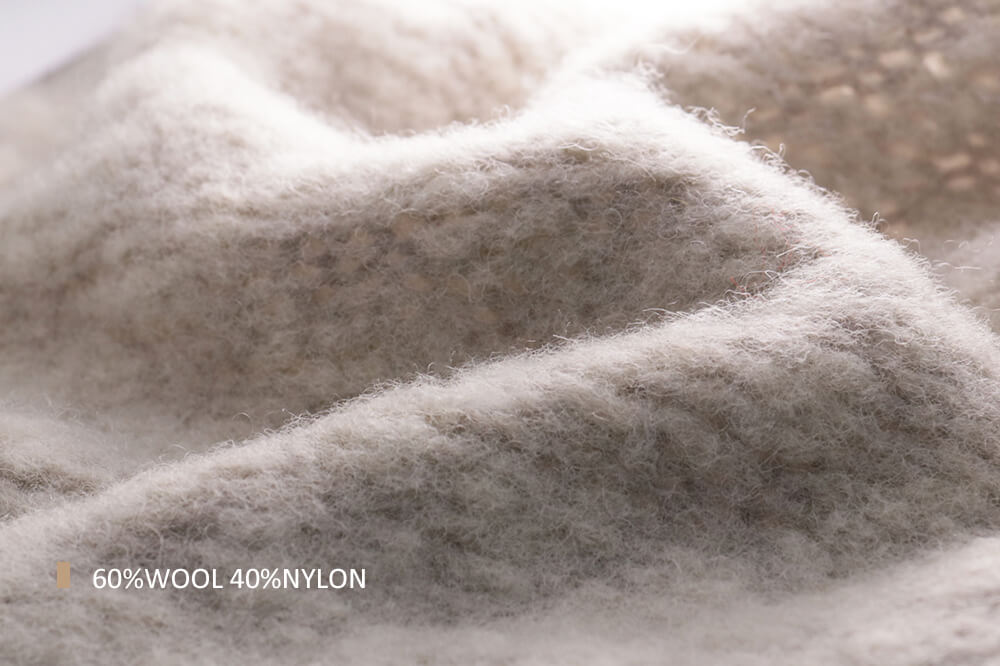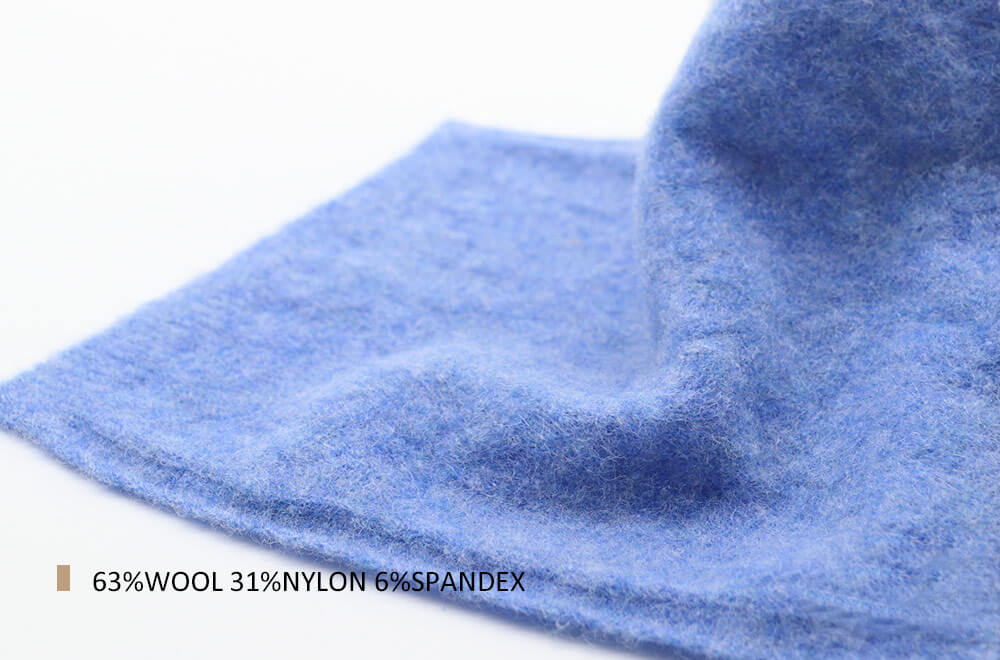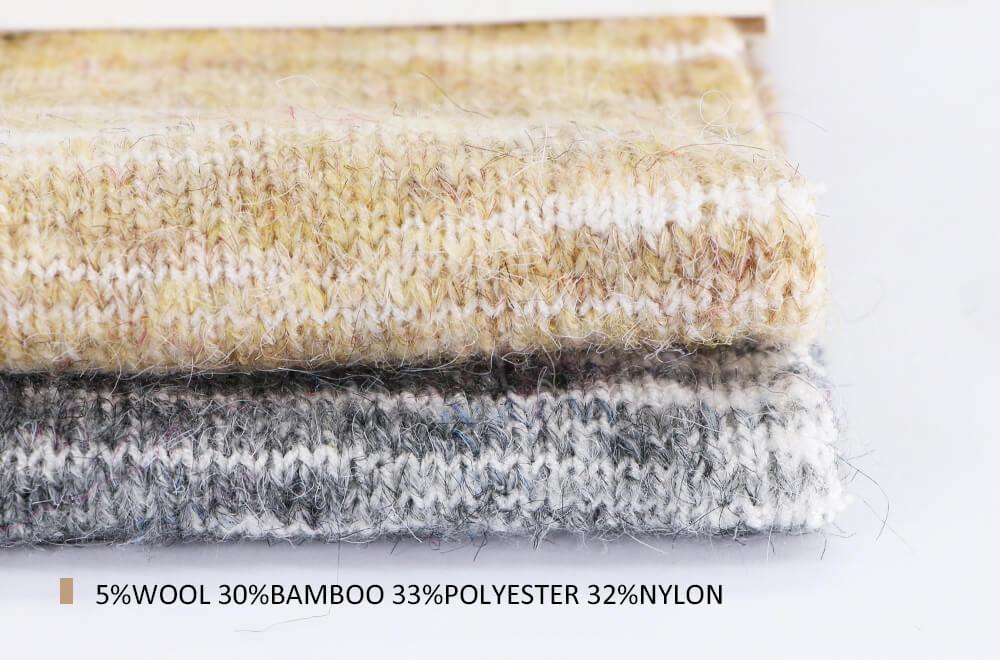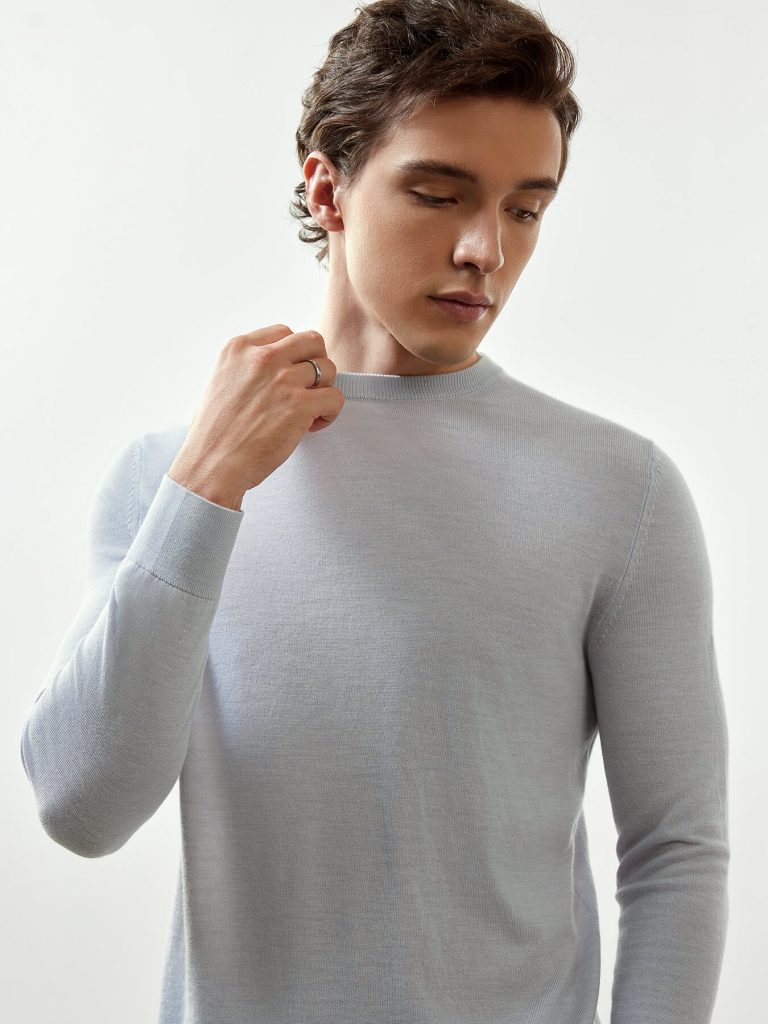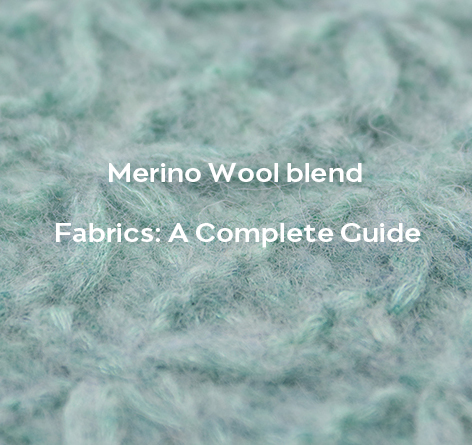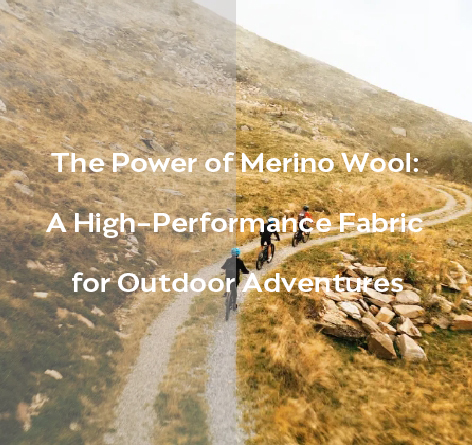Merino wool, renowned for its exceptional softness and fine quality, has a rich history that dates back centuries. Historically, Merino wool was reserved for royalty and the elite, prized for its luxurious feel and excellent insulation qualities. The wool’s natural ability to regulate temperature, wick moisture, and resist odors made it a favorite for both high-end fashion and functional garments.
As the textile industry evolved, so did the methods of fabric production. The demand for more versatile and durable materials led to the innovation of blended fabrics. By combining Merino wool with other fibers such as polyester, cotton, or elastane, manufacturers were able to enhance the fabric’s durability, elasticity, and affordability while retaining the inherent benefits of Merino wool. This blending process not only expanded the applications of Merino fabrics but also made them accessible to a broader audience.
The popularity of Merino blends has surged in recent years, driven by changing consumer preferences and advancements in fabric technology. Today, Merino blend fabrics are integral to a wide range of products, from high-performance athletic gear to stylish casual wear. Their versatility and superior performance have made them a staple in both the fashion and outdoor apparel industries.
Understanding the composition of Merino blend fabrics is essential to appreciate their unique properties and wide-ranging applications. The next section delves into the various fibers commonly blended with Merino wool, exploring how each addition transforms the fabric’s characteristics. By examining these combinations, we can better understand why Merino blends have become so significant in the modern textile landscape.
Common Fiber Blended with Merino Wool
Understanding the composition of Merino blend fabrics is crucial to appreciating their unique properties and wide-ranging applications. By combining Merino wool with various other fibers, manufacturers can tailor fabrics to meet specific performance, comfort, and aesthetic requirements. .
Merino wool blends are crafted by combining Merino wool with a variety of other fibers, each contributing unique properties to the final fabric. While these blends enhance certain aspects of Merino wool, they can also introduce some drawbacks. Below are the most prevalent fibers used in Merino blends, along with their advantages and disadvantages:
-
Polyester
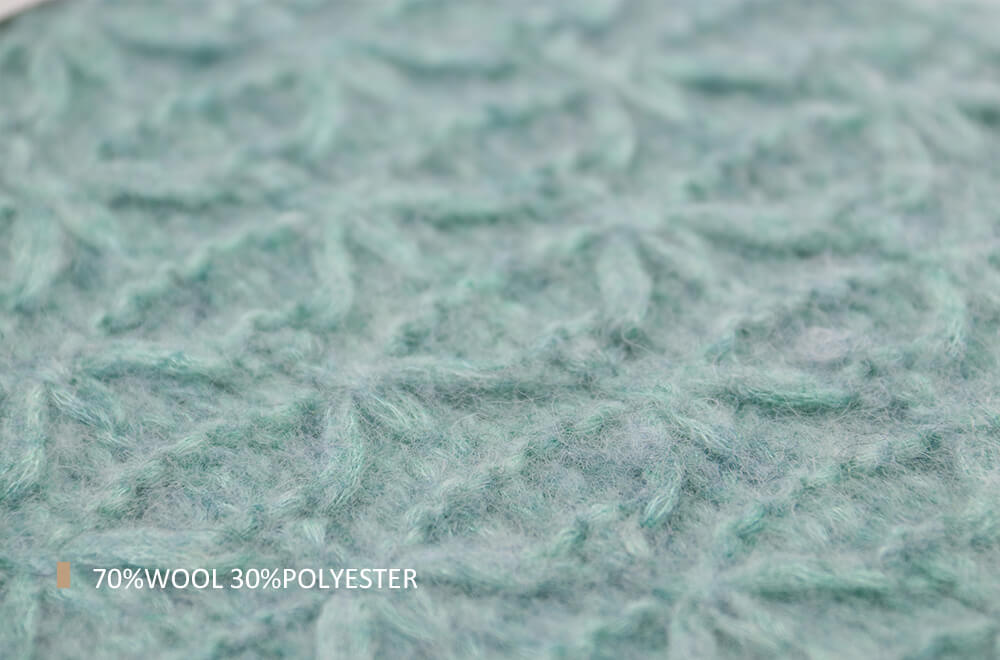
- Enhancement:
- Durability:Polyester significantly improves the fabric’s resistance to stretching and shrinking, making it more durable.
- Moisture-Wicking:Enhances the fabric’s ability to wick moisture away from the skin, keeping the wearer dry.
- Cost-Effectiveness:Reduces the overall cost of the fabric without substantially compromising quality.
- Disadvantages:
- Breathability:While polyester aids in moisture-wicking, it can reduce the overall breathability of the fabric compared to natural fibers.
- Environmental Impact:Being a synthetic fiber, polyester is derived from petrochemicals, contributing to environmental pollution and microplastic shedding during washing.
- Comfort:Polyester can sometimes feel less soft and more synthetic compared to purely natural blends.
2. Cotton
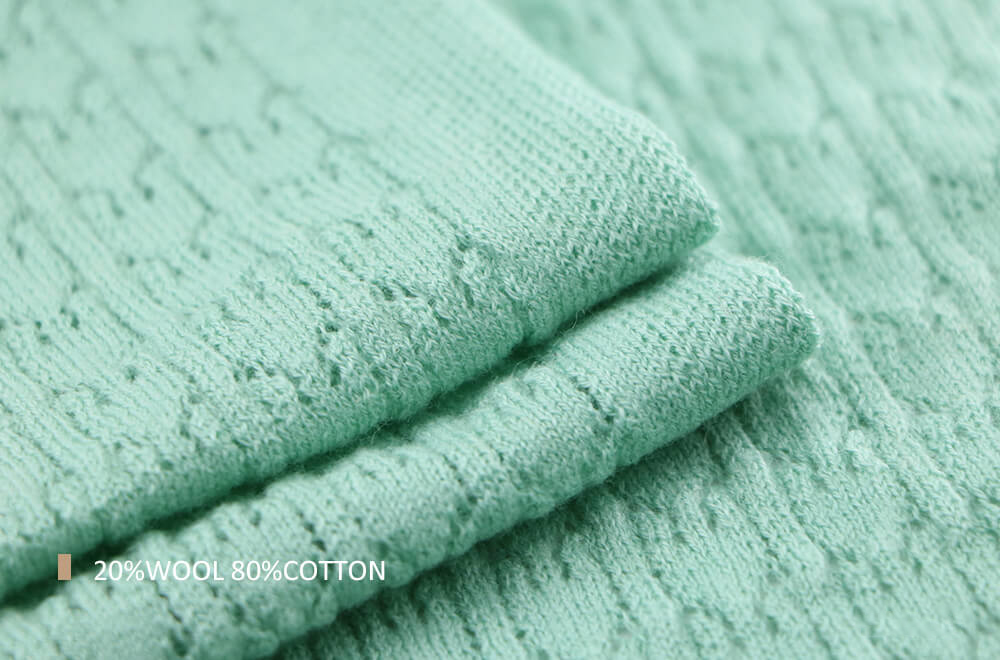
- Enhancement:
- Softness and Breathability:Adds a high level of softness and enhances the fabric’s breathability, increasing overall comfort.
- Absorbency:Improves the fabric’s ability to absorb moisture, making it ideal for casual and everyday wear.
- Disadvantages:
- Durability:Cotton is less durable than synthetic fibers, which can lead to quicker wear and tear in high-stress areas.
- Moisture Retention:While cotton absorbs moisture, it doesn’t wick it away as effectively as synthetic fibers, potentially leading to dampness during intense activities.
- Shrinkage:Cotton blends may be more prone to shrinkage and require careful maintenance to preserve fit and size.
3. Nylon
- Enhancement:
- Strength and Abrasion Resistance:Introduces increased strength and resistance to abrasion, extending the lifespan of garments.
- Elasticity:Adds elasticity, allowing garments to maintain their shape and provide better movement flexibility.
- Disadvantages:
- Breathability:Similar to polyester, nylon can reduce the overall breathability of the fabric.
- Environmental Concerns:Nylon production is energy-intensive and releases greenhouse gases, contributing to environmental degradation.
- Comfort:Nylon can sometimes feel less natural and more synthetic, potentially causing discomfort for some wearers.
4. Elastane (Spandex)
- Enhancement:
- Stretchability and Flexibility:Provides exceptional stretch and flexibility, ensuring a better fit and greater freedom of movement.
- Shape Retention:Helps garments retain their shape after stretching, reducing sagging and deformation over time.
- Disadvantages:
- Durability:Elastane can degrade with prolonged exposure to sweat, heat, and harsh detergents, leading to reduced elasticity over time.
- Environmental Impact:Being a synthetic fiber, elastane contributes to microplastic pollution and is not biodegradable.
- Comfort:Excessive use of elastane can make fabrics feel overly stretchy and less stable, potentially compromising the garment’s structure.
5. Bamboo
- Enhancement:
- Antibacterial Properties:Adds natural antibacterial properties, reducing odor and enhancing hygiene.
- Softness and Sustainability:Increases fabric softness and aligns with eco-friendly manufacturing practices, appealing to environmentally conscious consumers.
- Disadvantages:
- Durability:Bamboo fibers can be less durable than synthetic alternatives, leading to quicker wear in high-stress applications.
- Cost:Bamboo blends are often more expensive due to the sustainable sourcing and processing methods required.
- Moisture Management:While bamboo enhances softness, it may not wick moisture as effectively as synthetic fibers, potentially leading to dampness during intense activities.
6. Recycled Fibers
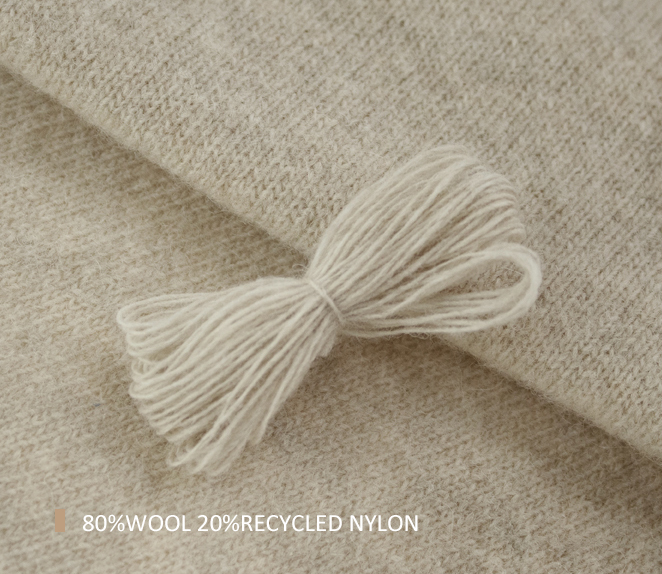
- Enhancement:
- Sustainability:Incorporating recycled polyester or other recycled fibers reduces the environmental impact of fabric production by repurposing waste materials.
- Performance Attributes:Maintains the fabric’s durability and moisture-wicking properties while promoting eco-friendly practices.
- Disadvantages:
- Quality Variability:Recycled fibers can vary in quality, potentially leading to inconsistencies in fabric performance and feel.
- Environmental Concerns:Although recycling reduces waste, the process can still be energy-intensive and may involve chemical treatments.
- Cost:High-quality recycled fibers can be more expensive than virgin synthetic fibers, impacting the overall cost of the fabric.
Impact of Each Fiber on Fabric Properties
Blending Merino wool with different fibers results in fabrics that retain Merino’s natural benefits while gaining additional functional attributes. Here’s a detailed look at how each fiber influences the overall fabric properties:
-
Durability
- Polyester and Nylon:Both synthetic fibers significantly enhance the fabric’s durability. Polyester adds resistance to stretching and shrinking, while nylon offers abrasion resistance, making the fabric more robust against wear and tear.
Result: Merino blends become more suitable for active and outdoor applications where longevity is essential.
-
Comfort
- Cotton and Bamboo:These natural fibers amplify the softness and breathability of Merino blends. Cotton increases the fabric’s absorbency, while bamboo adds a silky texture, enhancing overall comfort.
Result: The fabric remains comfortable for extended wear, suitable for both casual and performance-oriented garments.
-
Flexibility and Fit
- Elastane:Introduces significant stretch, allowing the fabric to move with the body and maintain its shape over time. This elasticity ensures a snug yet flexible fit.
Result: Ideal for garments that require a close fit and unrestricted movement, such as athletic wear and fitted sweaters.
-
Moisture Management
- Polyester and Recycled Fibers:Improve the fabric’s moisture-wicking capabilities, ensuring that sweat is drawn away from the skin and evaporates quickly.
Result: Keeps the wearer dry and comfortable during physical activities, enhancing performance and reducing discomfort.
-
Thermal Regulation
- Merino Wool:Naturally regulates temperature by providing insulation in cold conditions and breathability in warmer environments.
- Blended Fibers:While synthetic fibers like polyester can add warmth retention, natural fibers like cotton and bamboo maintain breathability.
Result: Creates a versatile fabric that adapts to varying temperatures, suitable for a wide range of climates and activities.
-
Sustainability

- Recycled and Bio-Based Fibers:Incorporating recycled polyester or bio-based elastane reduces the environmental footprint of the fabric production process.
Result: Appeals to eco-conscious consumers seeking sustainable and ethically produced textiles.
Typical Merino Wool Percentage in Blends
The proportion of Merino wool in blends can vary widely, influencing the fabric’s overall performance and suitability for different applications. Understanding these percentages helps in selecting the right blend for specific needs:
-
High-Merino Blends (70-90% Merino)
- Characteristics:Retains most of Merino’s natural softness, breathability, and thermal regulation.
- Benefits:Offers superior comfort and moisture management while gaining some durability from the synthetic fibers.
- Applications:Ideal for premium activewear, high-performance base layers, and luxury knitwear.
-
Medium-Merino Blends (50-70% Merino)
- Characteristics:Balances Merino’s natural benefits with enhanced durability and flexibility.
- Benefits:Versatile and suitable for a wide range of applications, offering both comfort and longevity.
- Applications:Suitable for everyday wear, outdoor apparel, and versatile fashion pieces.
-
Low-Merino Blends (30-50% Merino)
- Characteristics:Prioritizes durability and affordability while retaining some of Merino’s softness and breathability.
- Benefits:More cost-effective, making high-quality fabrics accessible to a broader audience.
- Applications:Perfect for budget-friendly activewear, durable outerwear, and mass-market clothing items.
-
Ultra-Low Merino Blends (Below 30% Merino)
- Characteristics:Contains minimal Merino wool, focusing primarily on the properties of the other fibers.
- Benefits:Maximizes durability and stretch while offering a hint of Merino’s comfort.
- Applications:Typically used in heavily synthetic garments where functionality outweighs natural fiber benefits.
Benefits of Wool Blend Fabrics
Merino blend fabrics combine the natural excellence of Merino wool with the advantageous properties of other fibers, resulting in textiles that offer superior performance, comfort, and versatility. Understanding the benefits of Merino blends helps consumers make informed choices and appreciate why these fabrics are highly sought after in various apparel sectors.
1. Enhanced Softness and Comfort
One of the most significant benefits of Merino blend fabrics is their exceptional softness. Merino wool is renowned for its fine fibers, which provide a luxurious feel against the skin. When blended with softer fibers like cotton or bamboo, the overall comfort of the fabric is further enhanced, making Merino blends ideal for garments worn directly against the body, such as base layers, underwear, and casual wear.
- Softness:The addition of cotton or bamboo reduces the itchiness sometimes associated with pure wool, ensuring maximum comfort for sensitive skin.
- Breathability:Merino blends maintain excellent breathability, allowing air to circulate and preventing overheating during prolonged wear.
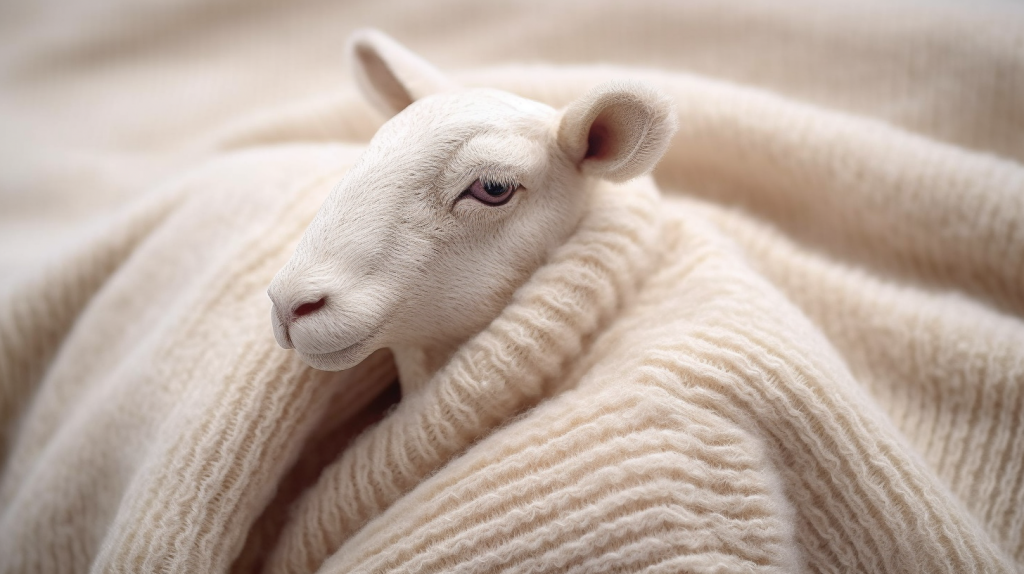
2. Increased Durability and Longevity
Blending Merino wool with synthetic fibers like polyester or nylon significantly boosts the fabric’s durability. These synthetic fibers enhance the resistance of the fabric to stretching, shrinking, and abrasion, ensuring that garments retain their shape and appearance over time.
- Durability:Merino polyester blends are less prone to wear and tear, making them suitable for activewear and outdoor apparel that undergoes frequent use.
- Longevity:Enhanced durability translates to longer-lasting garments, offering better value for money and reducing the need for frequent replacements.
3. Superior Moisture-Wicking and Breathability
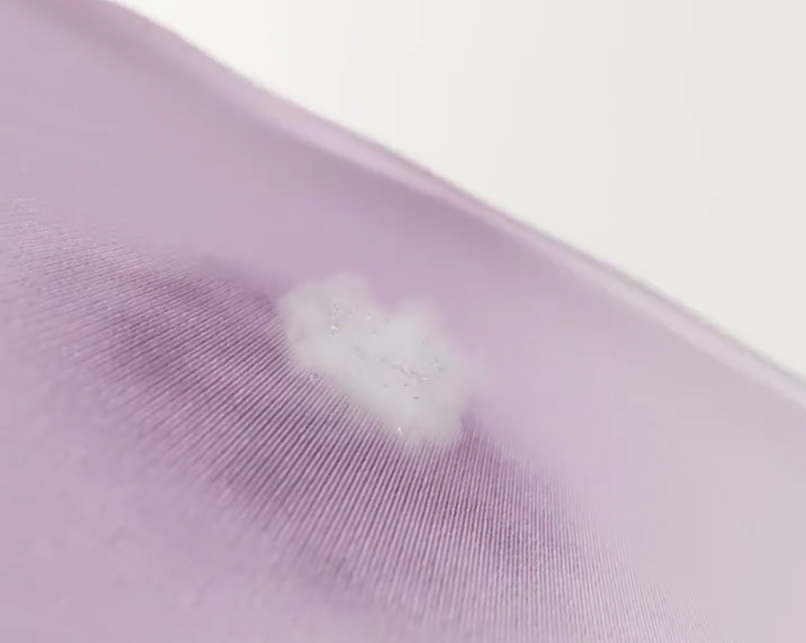
Merino wool inherently possesses excellent moisture-wicking properties, efficiently drawing sweat away from the skin to keep the wearer dry and comfortable. When blended with moisture-wicking fibers like polyester, these properties are further amplified, making Merino blends ideal for high-performance and athletic wear.
- Moisture Management:Effective moisture-wicking ensures that sweat is quickly evaporated, preventing discomfort and reducing the risk of chafing during physical activities.
- Breathability:The combined breathability of Merino wool and synthetic fibers allows for optimal airflow, enhancing overall comfort in various climates and conditions.
4. Temperature Regulation and Thermal Properties
Merino blend fabrics excel in regulating body temperature, keeping the wearer warm in cold conditions and cool in warmer environments. This thermal regulation is a result of Merino wool’s natural insulating properties, which are complemented by the added fibers in the blend.
- Insulation:Merino blends provide excellent warmth without the bulk, making them suitable for layering in cold weather.
- Cooling:In warmer temperatures, the breathable nature of the fabric helps dissipate heat, maintaining a comfortable body temperature.
5. Stretch, Flexibility, and Shape Retention
Incorporating elastane (spandex) into Merino blends introduces significant stretch and flexibility, allowing garments to move seamlessly with the body. This elasticity ensures that Merino blend fabrics maintain their shape and fit over time, even after repeated stretching and washing.
- Flexibility:Enhanced stretchability is particularly beneficial for activewear, where unrestricted movement is essential.
- Shape Retention:Garments retain their original shape, preventing sagging and ensuring a flattering fit for various body types.
6. Hypoallergenic Properties
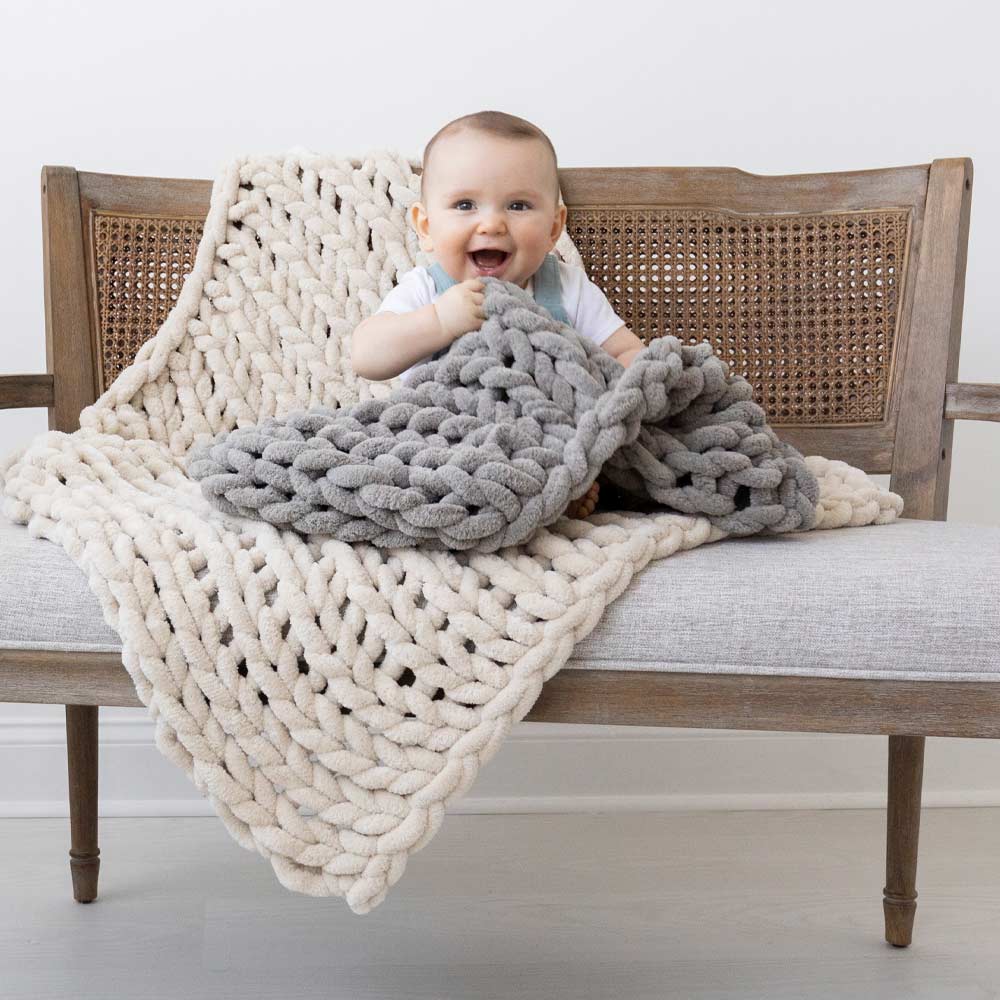
Merino wool is naturally hypoallergenic, making it an excellent choice for individuals with sensitive skin or allergies. When blended with other hypoallergenic fibers like bamboo, Merino blends offer additional comfort without causing irritation.
- Skin-Friendly:The softness and breathability of Merino blends minimize the risk of skin irritation, making them suitable for prolonged wear.
- Odor Resistance:Merino blends help reduce odor buildup by managing moisture and maintaining hygiene, even after extended use.
7. Sustainability and Eco-Friendliness
Many Merino blends incorporate sustainable fibers, such as recycled polyester or organic cotton, aligning with the growing consumer demand for eco-friendly products. These blends support sustainable manufacturing practices and reduce the environmental footprint of apparel production.
- Recycled Fibers:Using recycled polyester in Merino blends helps reduce plastic waste and promotes a circular economy.
- Organic and Natural Fibers:Blending with organic cotton or bamboo ensures that the fabric is produced with minimal environmental impact, supporting sustainable agriculture and reducing chemical usage.
8. Versatility and Aesthetic Appeal
Merino blend fabrics are incredibly versatile, suitable for a wide range of applications from high-performance athletic gear to stylish casual and formal wear. The ability to blend Merino wool with various fibers allows manufacturers to create fabrics with diverse textures, colors, and finishes, catering to different fashion trends and consumer preferences.
- Fashion-Forward Designs:Merino blends can be tailored to meet the latest fashion trends, offering a blend of style and functionality.
- Wide Range of Applications:From base layers and activewear to sweaters, socks, and even formal attire, Merino blends adapt to various garment types and uses.
Common Uses of Merino Wool Blend Fabrics
Merino blend fabrics are celebrated for their versatility and adaptability, making them a staple in various apparel categories. Their unique combination of comfort, durability, and performance attributes allows them to be used in a wide range of products, catering to different lifestyles and needs. This section explores the common applications of Merino blends in various garment types and specialized uses.
1. Apparel: Base Layers, Sweaters, Socks, Activewear, Casual Wear
Merino blend fabrics are integral to a diverse array of clothing items, each benefiting from the fabric’s unique properties:
-
Base Layers
-
- Function:Serve as the first layer of clothing, providing thermal insulation and moisture managment.
- Benefits:The moisture-wicking and thermal regulation properties of Merino blends keep the wearer dry and warm during outdoor activities.
- Applications:Ideal for skiing, hiking, and other cold-weather sports.
- Example Products:Merino blend thermal tops and leggings.
-
Sweaters and Knitwear

-
- Function:Offer warmth, style, and comfort in cooler climates.
- Benefits:The softness of Merino blends ensures comfortable wear, while the added durability and shape retention enhance the garment’s longevity.
- Applications:Suitable for casual wear, office attire, and stylish outerwear.
- Example Products:Merino blend pullovers, cardigans, and turtlenecks.
-
Socks
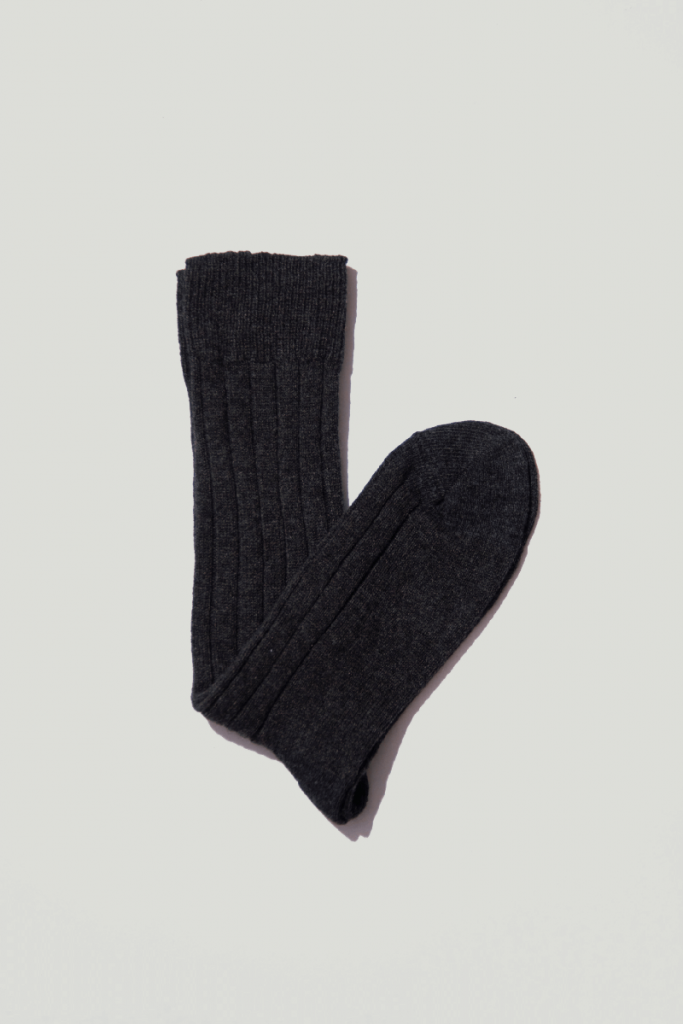
-
- Function:Provide cushioning, moisture management, and comfort for the feet.
- Benefits:Merino blend socks wick away moisture, reduce odor, and offer superior cushioning, making them ideal for long hikes and daily wear.
- Applications:Perfect for athletic use, casual outings, and professional environments.
- Example Products:Merino blend hiking socks, dress socks, and athletic socks.
-
Activewear
- Function:Designed for physical activities, offering comfort and performance.
- Benefits:The stretchability, moisture-wicking, and breathability of Merino blends enhance performance and comfort during workouts.
- Applications:Suitable for yoga, running, cycling, and gym wear.
- Example Products:Merino blend leggings, sports bras, and performance tops.
-
Casual Wear
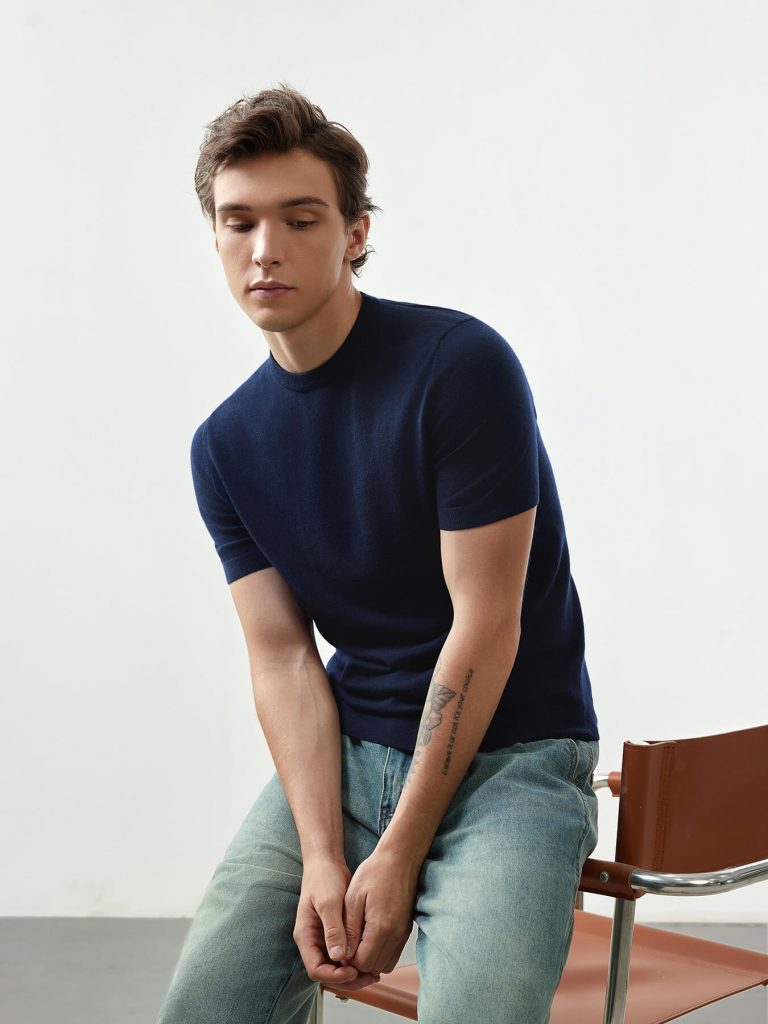
-
- Function:Provides everyday comfort and style.
- Benefits:The versatility of Merino blends allows for fashionable yet comfortable garments that can be worn in various settings.
- Applications:Ideal for jeans, casual shirts, hoodies, and lightweight jackets.
- Example Products:Merino blend t-shirts, casual blazers, and hooded sweatshirts.
2. Outdoor Gear: Hiking, Camping, Sports Apparel
Merino blend fabrics are highly valued in the outdoor apparel industry for their performance-enhancing features:
- Hiking and Camping Gear
- Function:Offers protection and comfort in rugged outdoor environments.
- Benefits:The durability and moisture-wicking properties of Merino blends ensure comfort during long hikes and camping trips.
- Applications:Suitable for base layers, jackets, and travel gear.
- Example Products:Merino blend hiking pants, insulated jackets, and travel shirts.
- Sports Apparel
- Function:Enhances athletic performance through specialized fabric properties.
- Benefits:The stretchability, breathability, and moisture management of Merino blends improve performance and comfort during sports activities.
- Applications:Ideal for team sports, individual athletics, and extreme sports.
- Example Products:Merino blend compression shirts, sports shorts, and performance jackets.
3. Fashion: Formal and Business Attire
Merino blend fabrics have seamlessly integrated into the formal and business attire sectors, offering a blend of style and functionality:
- Formal Wear
- Function:Provides elegance and comfort for formal occasions.
- Benefits:The refined texture and shape retention of Merino blends ensure a polished appearance without sacrificing comfort.
- Applications:Suitable for suits, blazers, and dress shirts.
- Example Products:Merino blend business suits, tailored blazers, and wrinkle-resistant dress shirts.
- Business Attire
- Function:Combines professionalism with everyday comfort.
- Benefits:The durability and ease of care of Merino blends make them ideal for office wear, reducing maintenance while maintaining a sharp look.
- Applications:Perfect for office blouses, trousers, and business casual wear.
- Example Products:Merino blend pencil skirts, button-down shirts, and chinos.
4. Specialty Applications: Medical Textiles, Performance Wear
Beyond mainstream apparel, Merino blend fabrics find specialized uses in niche markets:
-
Medical Textiles
- Function:Provides comfort and hygiene in medical environments.
- Benefits:The hypoallergenic and moisture-wicking properties of Merino blends ensure comfort for patients and healthcare professionals.
- Applications:Suitable for medical scrubs, patient gowns, and therapeutic garments.
- Example Products:Merino blend scrubs, antimicrobial patient gowns, and compression therapy wear.
-
Performance Wear
- Function:Designed for specific performance requirements in various activities.
- Benefits:Enhanced durability, stretch, and moisture management cater to the needs of athletes and performers.
- Applications:Ideal for dancewear, stage costumes, and specialized sports gear.
- Example Products:Merino blend dance tights, performance jackets, and high-performance sports bras.
5. Additional Niche Uses
Merino blend fabrics also cater to unique applications, expanding their utility across different industries:
-
Travel Apparel
- Function:Combines comfort, durability, and easy care for travelers.
- Benefits:Wrinkle-resistant and quick-drying properties make Merino blends ideal for long journeys.
- Applications:Suitable for travel shirts, versatile jackets, and multi-functional garments.
- Example Products:Merino blend travel shirts, lightweight travel pants, and versatile travel jackets.
-
Loungewear and Sleepwear
- Function:Offers unparalleled comfort for relaxation and sleep.
- Benefits:The softness and breathability of Merino blends ensure a comfortable and restful experience.
- Applications:Perfect for pajamas, robes, and comfortable loungewear sets.
- Example Products:Merino blend pajama sets, cozy robes, and relaxed-fit loungewear.
-
Workwear
- Function:Provides durability and comfort for various work environments.
- Benefits:The robust nature of Merino blends ensures longevity, while moisture management keeps workers comfortable.
- Applications:Suitable for uniforms, coveralls, and protective garments.
- Example Products:Merino blend coveralls, work shirts, and durable uniforms.
Innovative Fiber Combinations in 2025
The textile industry is continually evolving, with advancements in fiber technology leading to the creation of innovative Merino blends that offer enhanced performance and sustainability. Here are some of the cutting-edge fiber combinations emerging in 2025:
-
Recycled Polyester Merino Blends
- Description:Combines Merino wool with recycled polyester derived from post-consumer plastic bottles.
- Benefits:Reduces environmental impact by repurposing waste materials while maintaining fabric durability and moisture-wicking properties.
- Applications:Sustainable activewear, eco-friendly base layers, and environmentally conscious fashion lines.
-
Bamboo-Merino Blends
- Description:Merges Merino wool with bamboo fibers, known for their softness and antibacterial properties.
- Benefits:Enhances fabric softness, provides natural odor resistance, and increases breathability, making it ideal for sensitive skin.
- Applications:High-end activewear, intimate apparel, and luxury casual wear.
-
Bio-Based Elastane Merino Blends
- Description:Incorporates bio-based elastane derived from renewable resources instead of traditional petrochemical-based elastane.
- Benefits:Offers the same stretch and flexibility as conventional elastane but with a reduced environmental footprint.
- Applications:Sustainable performance wear, eco-friendly leggings, and stretchy knit garments.
-
Modal-Merino Blends
- Description:Blends Merino wool with modal, a type of rayon made from beech tree cellulose.
- Benefits:Increases fabric softness and drape while maintaining Merino’s thermal properties and moisture management.
- Applications:Elegant sweaters, flowing tops, and comfortable loungewear.
-
Tencel-Merino Blends
- Description:Combines Merino wool with Tencel (lyocell), a sustainable fiber known for its smooth texture and eco-friendly production process.
- Benefits:Enhances moisture absorption, provides a silky feel, and ensures sustainable fabric production.
- Applications:Sustainable fashion collections, comfortable workwear, and high-performance outdoor clothing.
-
Graphene-Infused Merino Blends
- Description:Integrates graphene, a super-strong and lightweight material, into Merino blends to enhance performance.
- Benefits:Increases fabric strength, adds thermal conductivity for better heat management, and provides antibacterial properties.
- Applications:Advanced athletic wear, high-tech outdoor gear, and innovative fashion pieces.
-
Hemp-Merino Blends
- Description:Merges Merino wool with hemp fibers, known for their strength and sustainability.
- Benefits:Adds durability, enhances breathability, and supports sustainable farming practices.
- Applications:Eco-friendly outerwear, durable casual wear, and sustainable fashion lines.
These innovative fiber combinations not only improve the functional aspects of Merino blends but also cater to the growing consumer demand for sustainable and high-performance textiles. By integrating recycled, bio-based, and natural fibers with Merino wool, manufacturers can produce fabrics that are not only better for the environment but also offer superior performance attributes. These advancements ensure that Merino blend fabrics remain at the forefront of textile innovation, meeting the evolving needs of modern consumers.
Conclusion
By understanding the composition and benefits of Merino blend fabrics, you can make informed decisions that enhance both your personal wardrobe and your product offerings. The adaptability of these fabrics ensures they meet a wide range of needs, from everyday comfort to specialized performance requirements.
If you’re looking to delve deeper into the world of Merino blend fabrics or need personalized advice on selecting the right blends for your specific needs, HD is here to assist you. Our experts are ready to provide comprehensive consultation services to help you make the most of Merino blends in your apparel designs. Contact HD today to elevate your textile projects with the finest Merino blend solutions.


